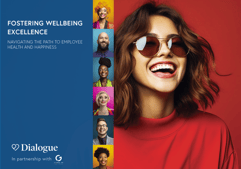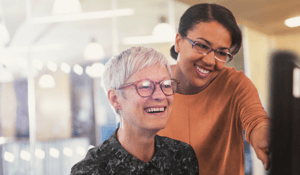People often ask me, 'Why is the multigenerational workplace a topic of conversation now? Haven't our workplaces always been a blend of different ages?'
It's true, they have. But what's unique today is the sheer diversity and dynamics at play.
Thanks to longer working lives, population shifts, the colossal impact of technology, COVID-19, evolving mental health attitudes, and even globalisation bringing diverse cultures together, our workplaces are bubbling melting pots like never before.
In recent years, we've seen not just three, but four — even in some cases five — generations sharing office space, each bringing their unique flavours to the mix. Our workplaces have transformed into vibrant stews, brimming with excitement and, admittedly, presenting their own unique set of challenges.
The gradual shift in workplace demographics: From three to five
The workplace demographic has been shifting subtly yet significantly over the years. A 2014 government report foresaw this dramatic change, predicting the rise of four-generation (4G) workplaces. Today, we're living this reality in all its glory.
Age spectrum in today's workplace: The young and the experienced
From Gen Z's fresh perspectives to the seasoned insights of Baby Boomers, our workplaces are richer than ever. Did you know that by 2025, Gen Z will make up 27% of the workforce? That's a significant shift!
Benefits of a multigenerational mix: A symphony of skills
Imagine an orchestra where each instrument brings a unique sound. That's our workplace! The experience of older generations harmonises with the innovative ideas of the younger crowd, creating a melody of progress and growth.
Communication across ages: From emails to emojis
Communication styles have evolved. Where once phone calls reigned, now emails, instant messages, and even WhatsApp rule the roost. It's about finding a common language in this diverse linguistic landscape.
Evolving employee needs: From retirement plans to mental wellness
What employees expect from their workplace has changed dramatically. While older generations might focus on retirement planning, younger ones prioritise mental health and wellness. It's a shift that's reshaping how we support our teams.
The role of technology and mental health: Tech-savvy to tech-dependent
Technology isn't just a tool; it's a lifeline for many, especially the younger workforce. And let's talk about mental health – no longer a taboo, it's a priority and a non-negotiable, across all age groups, thanks to the advocacy of millennials and Gen Z. Digital solutions, such as Dialogue’s very own wellness app, empower employees to take control of their mental wellbeing in the digital age.
Managing the mix: Inclusion and Dialogue
It's all about creating an environment where everyone feels heard and valued. Tailoring wellness programmes to suit diverse needs isn't just nice – it's necessary for a thriving workplace. In a recent webinar hosted by Dialogue, we delved into this topic, highlighting the crucial balance between personalised wellbeing programmes and adapting them to fit the generational composition of your workforce. Whether your team is predominantly Baby Boomers or leans towards Gen Z, it's important to recognize that both communication styles and wellbeing needs can differ markedly.
Leadership and change: Leading by example
Senior leaders are pivotal in shaping a culture that values inclusive wellbeing. Key to this is understanding the unique characteristics of each generation. For example, Gen Xers value independence in their work, responding best to autonomy and positive reinforcement. Meanwhile, Gen Z employees typically appreciate frequent feedback. Employing the 'sandwich' method – offering positive feedback, followed by constructive suggestions, and ending with more positive comments – can be particularly effective for engaging and motivating this younger generation. This approach helps managers to connect with their teams on a deeper level, fostering a workplace environment that is both inclusive and supportive.
Embracing age diversity in the workplace is more than just a box-ticking exercise. By understanding and valuing what each generation brings to the table, we're not just improving our businesses – we're forging a future that's inclusive and forward-thinking. Our 4G workplace is a vibrant and dynamic reality, a place where every age group contributes to a rich tapestry of ideas and energy. This isn't just the future of work; it's a new chapter where every generation plays a key role, collectively shaping a workplace that's as diverse in thought as it is in experience.




 Canada (EN)
Canada (EN)
 Global (EN)
Global (EN)

